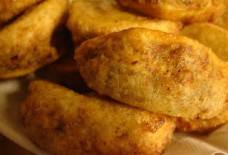SOURCE: WELCOME COLLECTION
BY: YASMEEN ABDEL MAJEED
ARTWORK: JACQUELINE REEM SALLOUM
Palestinian doctor Tawfiq Canaan documented the personal narratives behind every amulet in his collection, 220 of which he gave to Henry Wellcome’s collection. One modest necklace that caught the eye of Yasmeen Abdel Majeed as she worked at Wellcome Collection has allowed her to reveal its multilayered story.



